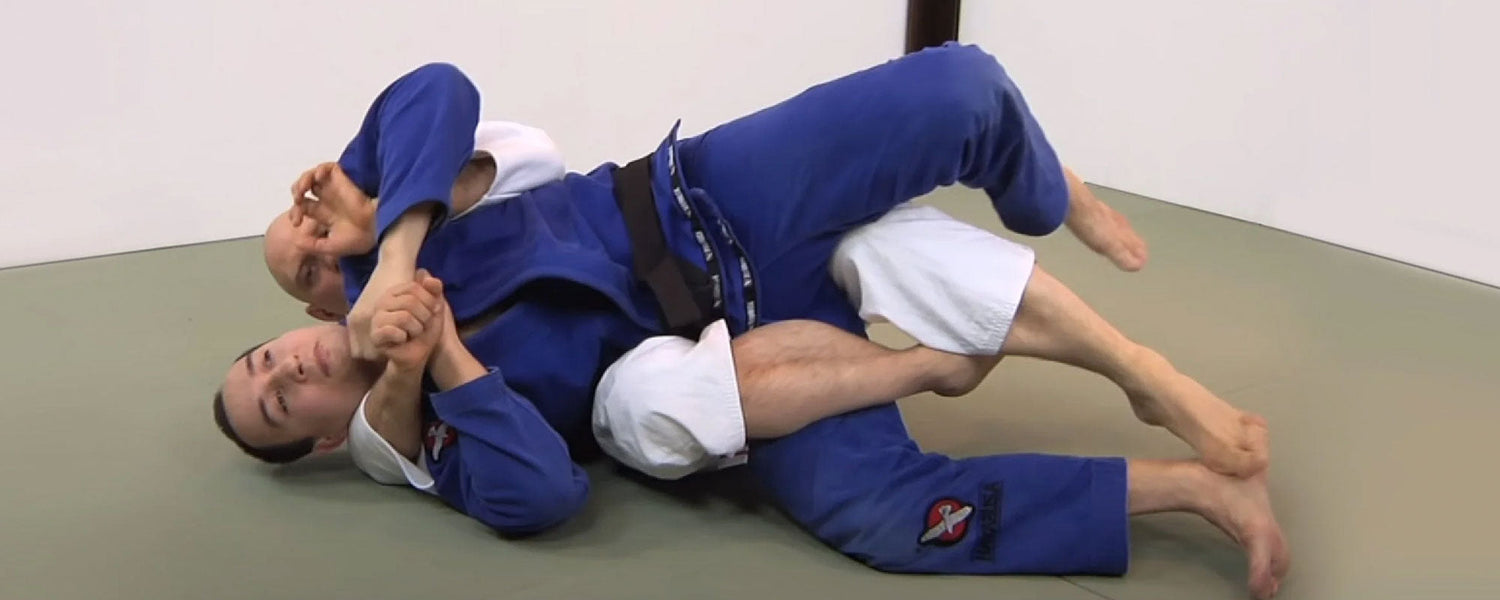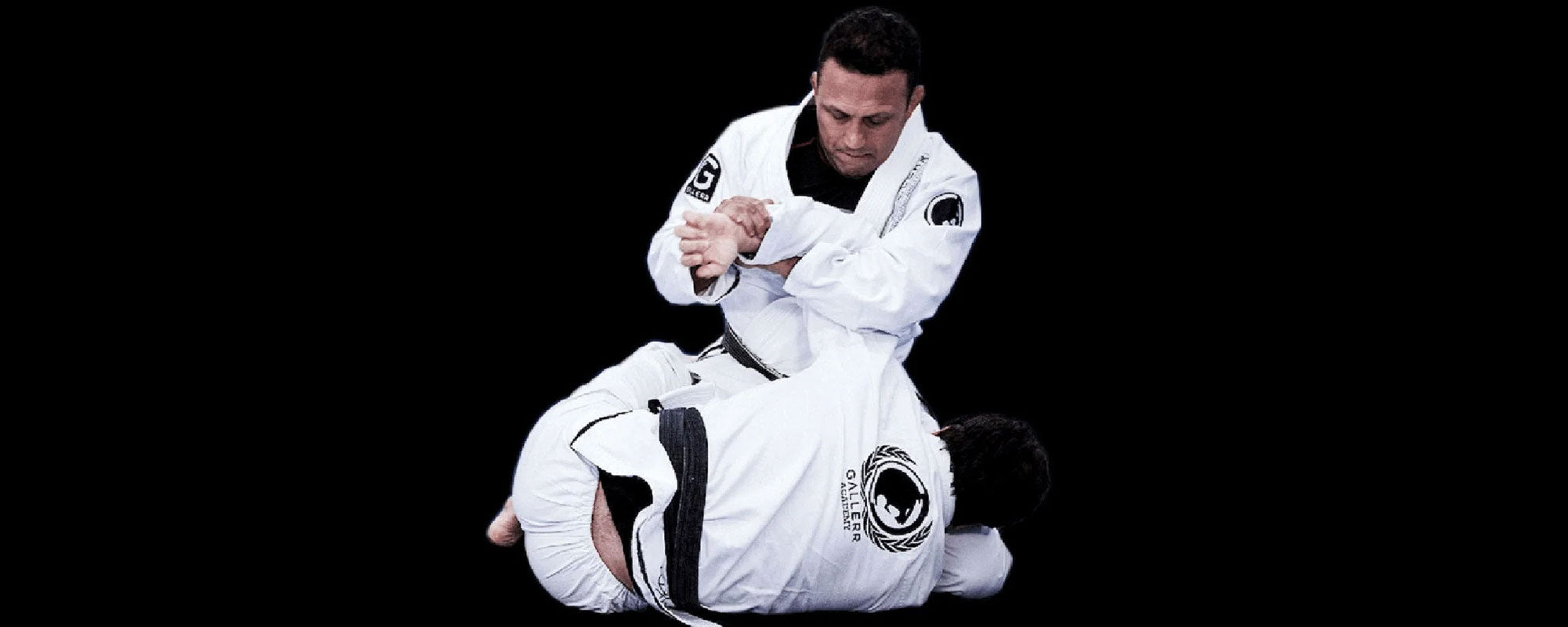Table of content
The BJJ truck position developed by Eddie Bravo is the most basic position of the 10th Planet Jiu-Jitsu System. This system is pioneered by Eddie Bravo and is widely used in MMA and BJJ. The 10th Planet system differs from the traditional Brazilian Jiu-Jitsu system as it completely negates the use of a gi. Eddie Bravo’s unique approach to jiu-jitsu helped him create many new techniques through this system, one of these being the BJJ truck position.
This article will help you learn everything about the innovative BJJ trucking, including its history, setup, entries, and submission attacks.
1. What is BJJ Truck Position?
The BJJ Truck is a grappling position that is frequently used in jiu-jitsu, either as a control position or as a transition to back control. It has become one of the most dangerous attacking positions in this modern era of sports.
The BJJ Truck is also known as the rolling back attack in traditional jiu-jitsu and is a way to initiate many submission techniques using a single move.
In the No-Gi circuit, Trucking is usually associated with Eddie Bravo and his 10th Planet system since he and his students were the first to showcase the use of this position to the submission grappling community.
However, in the Gi circuit , the position is linked with the Mendes brothers (Guilherme and Rafael) and their style, specifically in relation to the Crab Ride and the Berimbolo Position.
1.1. How does it work?
The truck position allows the practitioner to gain control and dominate his opponent while transitioning to back control. In fact, the truck position is a great addition to the traditional back control system.
The effectiveness of the truck depends on the figure-four configuration of the legs, which allows a grappler to pin one of his opponent’s legs. In wrestling, it’s all about pinning the opponent from thereon. However, the benefit of reducing the opponent’s mobility is also crucial in submission hunting.
2. History of Truck Position
The truck position has its roots in wrestling, just like many of Eddie Bravo’s concepts. It was used in various wrestling competitions for many years before being introduced to jiu-jitsu.
2.1. Use of the Truck in Wrestling
The truck position is basically a modification of the leg ride from wrestling.
The leg ride is a move that was intended to break the defenses of the opponent and expose his back in order to get a pin.
Two frequently used pinning positions were the Banana Split and the Twister.
Leg rides were used to pressure turtled-up competitors and then these two techniques were used to pin them down.
Leg riding gave wrestlers great control and allowed them to put on immense pressure while aiming for the pin. Keep in mind that the purpose here was to pin the opponent, not to initiate a submission .
2.2. Use of Truck in BJJ
The wrestling leg ride was first learned by Eddie Bravo during his time in high school. Eddie took this concept even further and perfected this position to be used in Brazilian Jiu-Jitsu.
Eddie Bravo was a wrestler before becoming a BJJ athlete. Eddie, under the guidance of Jean Jacques Machado, developed his unique style by adding the old wrestling techniques to his emerging jiu-jitsu arsenal .
The Twister of the 10th Planet (formerly known as wrestles’ guillotine) was one of those techniques, which eventually gave birth to the BJJ truck position.
When the International Brazilian Jiu-Jitsu Federation (IBJJF) started abandoning the use of twisting locks and vertebral column attacks, Eddie began to focus on the No-Gi circuit and developed his own idea of the Truck Position.
Eddie soon enhanced the use of the BJJ truck in the No-Gi world and taught this technique to others as well.
Around the 2000s, when Eddie was busy developing the BJJ truck for his grappling program, Leonardo Viera, Ryan Hall, and Andre Galvao started utilizing a similar “Twister Roll” in various Gi and No-Gi competitions.
A few years later, the Truck position began to flourish in Gi tournaments as well due to the rebirth of the Berimbolo and Crab Ride by Guilherme Mendes and Rafael.
2.3. Athletes known for using BJJ Trucking
- Eddie Bravo
- Rafael Mendes
- Mikey Musumeci
- Paulo Miyao
- Joao Miyao
- Ryan Hall
3. Understanding the BJJ Truck Position
The BJJ truck position is often considered a variation of back control techniques. The main benefit of this technique is that it is almost halfway between the mount and complete back control. Hence, it allows for a quick transition back and forth between two of BJJ’s most dominant positions (called “dead zones” by Eddie Bravo).
In addition to being a perfect transitional checkpoint, the BJJ truck is itself a “dead zone.” Using the Figure-four on one of the opponent’s legs is the main source of control in the truck position, which also provides total hip control on that side.
As one anchoring point is not enough in BJJ, there are two ways to obtain more in a BJJ truck position.
One way is to control your opponent’s side leg and render his hip motionless. The easiest way to control the leg is via a foot lock, but a Banana Split is also a good option.
Another way is to gain control over your opponent’s shoulder. This is much better as the shoulder you control is positioned diagonally towards the hip you already have pinned . Such cross-body control results in the efficient immobilization of the opponent.
Learn the positional study of BJJ trucking in detail from Eddie Bravo himself in the video given below:
4. The Truck Position Set Up
The truck position may be perplexing at first, but understanding the basic setup can make the use of this position convenient.
In a simple setup, one competitor lies with his back on the top of another competitor, with their legs and arms intertwined.
In order to form this setup:
- First, make sure to be underneath your opponent.
- Then lock down one of your opponent’s legs while controlling either his arm or leg with your arms.
- From there on, either keep your opponent in a hold or perform as many attacks as you want.
5. BJJ Truck Transitions and Submission Rate
While BJJ positions are great for pinning someone to the ground and earning points to win a match, positions alone cannot make the BJJ. The main goal of jiu-jitsu is not to pin your opponent but to make them surrender via submission.
One trick to achieving a higher rate of submission is to focus on BJJ truck transitions. Most of the advanced grapplers try for a submission while they’re transitioning, without giving the opponent a chance to defend.
The BJJ truck is such a position that can provide a bunch of top submissions and transitional submissions from a single stance. Moreover, this position makes it possible to do from almost everywhere.
The whole point is to understand how to use BJJ transitions to get into the truck position in the first place.
6. Entries into the Truck
There are countless ways to enter into a BJJ truck position. The truth is, if we try to gather all of the entries, the number would range in the hundreds. However, it’s not necessary to learn all of these positions. Knowing only the basic entries e.g. the top turtle and a few side control variations can help you go a long way.
6.1. The Turtle
One of the most basic ways to initiate the truck position is the turtle position where your opponent is turtled up while you are in control.
The only requirement from the top of the turtle is to apply weight to the hips. Your main goal is to place your far leg inside the competitor’s leg and then grab his far leg with your arms. This very movement will get you into a truck position, but to stay in that position, you need to keep your opponent’s hips lifted off the ground at all times.
Watch the following video for a step-by-step guide to this transition.
6.2. Top Side Control
The most widely used entry to the truck position is the top side control or the 10th Planet Twister Side Control, commonly known as the reverse Gatame.
The main focus here is to put as much weight on your competitor throughout the maneuver.
All you need to do is to hook your opponent’s top leg with your bottom leg. Then grab any part of his bottom leg with your hands , ideally the foot. Next, move both your shoulders to the opposite side and pull the opponent’s leg with your arms. This movement will lead you to the truck position.
Learn how to get into the truck, and ultimately into the twister, from the side control in the following video:
6.3. Other Entries
There are many other useful entries into the truck position such as the back mount, half guard dogfight, double underhook pass, rolling kimura, etc.
Most of these entries into the truck position require flashy movements which can be better understood by a visual demonstration.
Hence, watch and learn the 20 common entries by Geovanny Freakahzoid Martinez in the video given below:
7. Attacks & Submissions from the BJJ Truck
Depending on the type of control, there are two main attacking areas from the BJJ Truck position.
- Leg Locks/Attacks: When you have control of both hips
- Twister and Similar Spinal Locks: When you have a cross-body control (one hip and one shoulder)
7.1. Leg Attacks
7.1.1. Calf Slicer from Truck
The calf slicer is the most brutal leg attack available from the truck position. This submission is often hard to get as the opponent tries to wiggle out, but the truck position offers the most stable stance for finishing the slicer.
- To attack with a calf slicer, you need to grab the foot of the hooked leg and pull it towards you.
- Your goal is to place your shin behind your opponent’s knee. To do this, place one of your legs between your opponent’s hips and calf, and point your own shinbone at his calf.
- Then pull down your opponent’s leg with one of your arms. This will induce a massive pressure on his calf, causing him to tap due to pain.
Pro tips
If you let go of your opponent’s opposite side leg, he will spin out, leaving you on the bottom at a half guard. Hence, try to control the foot of his other leg by tucking it under your armpit. This will give you the chance to reach the foot of the leg you’re attacking.
7.1.2. Banana Split from Truck
Another easy attack from the truck position is the Banana Split. It requires hugging part of your opponent’s side thigh and pulling it towards you while extending your legs at the same time.
- To perform this split, first, hook your hand around the thigh of your opponent’s free leg.
- Then pull his thigh with your arms and extend your hips for a deadly crotch ripper.
7.2. The Twister
The Twister is a deadly submission that puts immense pressure on the opponent’s spine at multiple points. The aim here is to twist the spine to either induce a tap or a serious injury.
- To perform the twister, control your opponent’s arm that is on the opposite side of the leg you’re already holding in the truck. The best way to do so is to control his wrist with both of your arms.
- Once you get the wrist, the next step is to get into a “baseball bat position.” For this, push your nearside elbow deep into your opponent’s armpit.
- For a perfect submission, place your head over the arm you’re controlling. Then place a grip with both your arms on the side of your opponent’s forehead and pull back to finish the move.
8. Takeaways
No doubt the BJJ truck position has tremendous potential and can offer many submissions. But make sure to train properly for effective implementation of this technique .
Here are some more videos to guide you on BJJ Trucking.
Photo Credit: @Stephan Kesting













Leave a comment
This site is protected by hCaptcha and the hCaptcha Privacy Policy and Terms of Service apply.